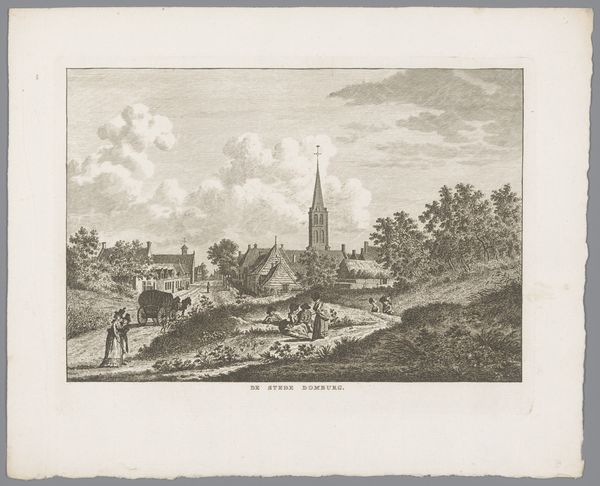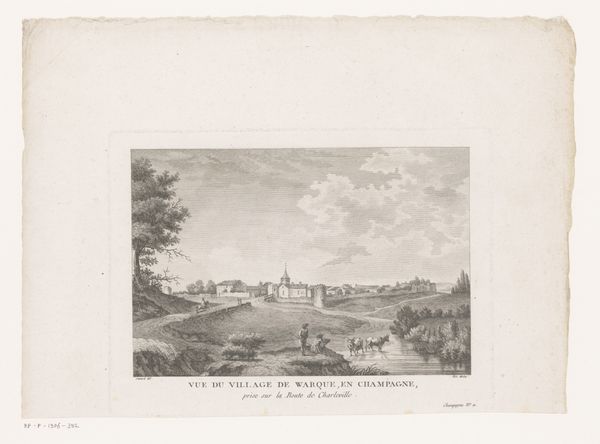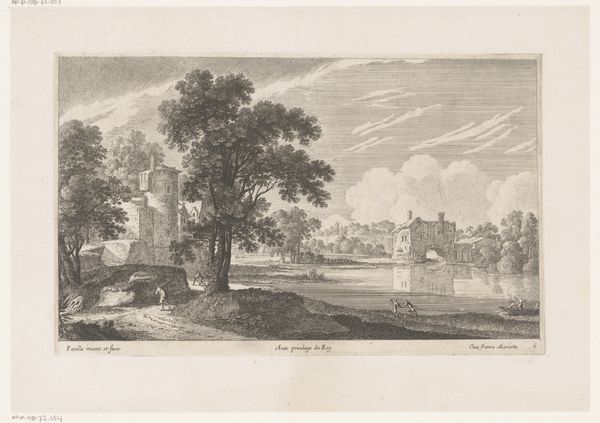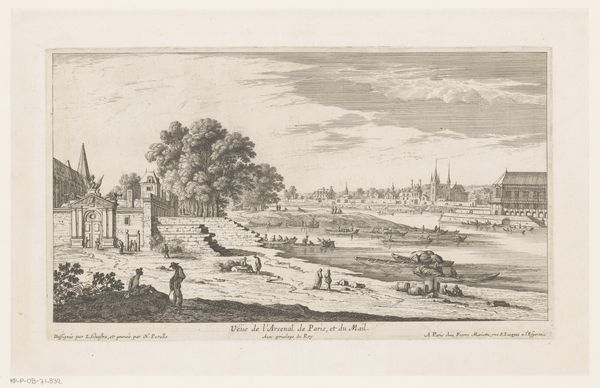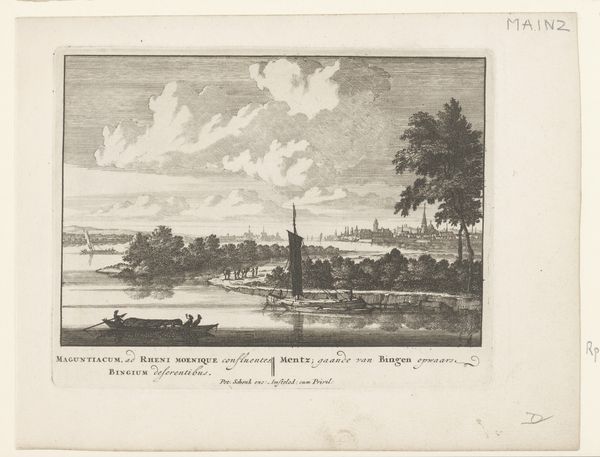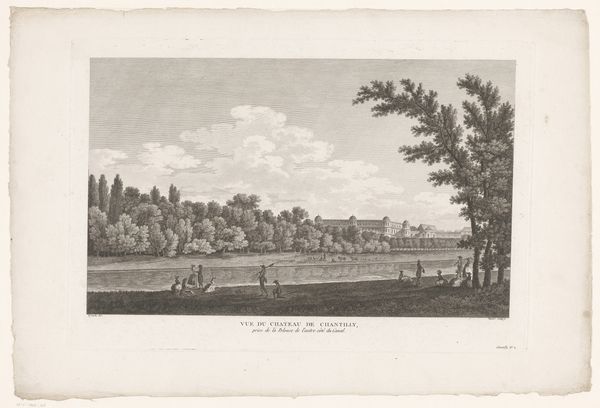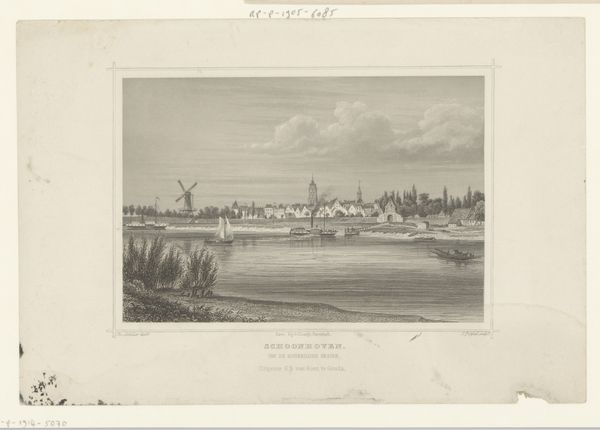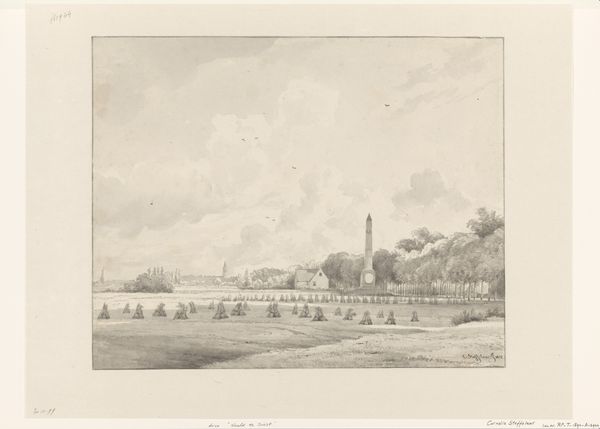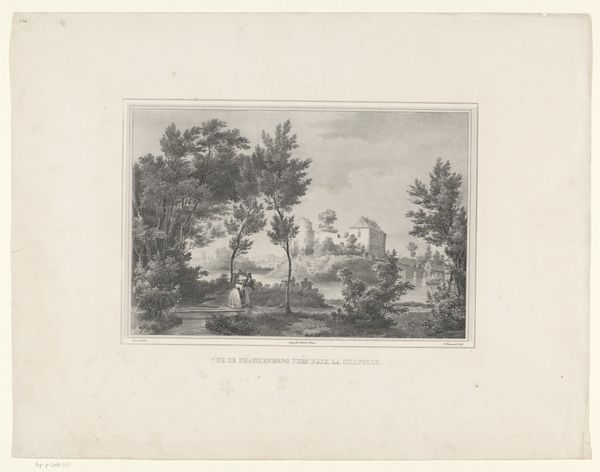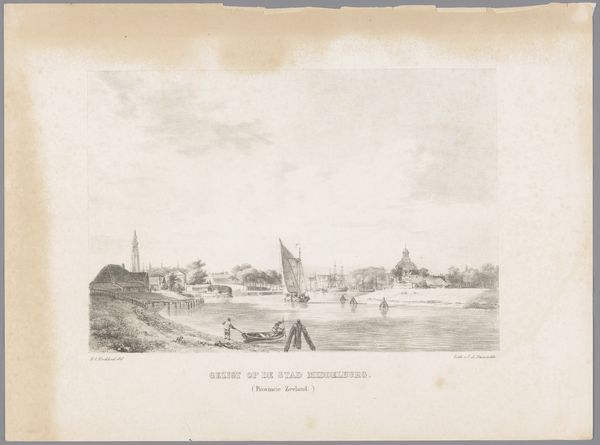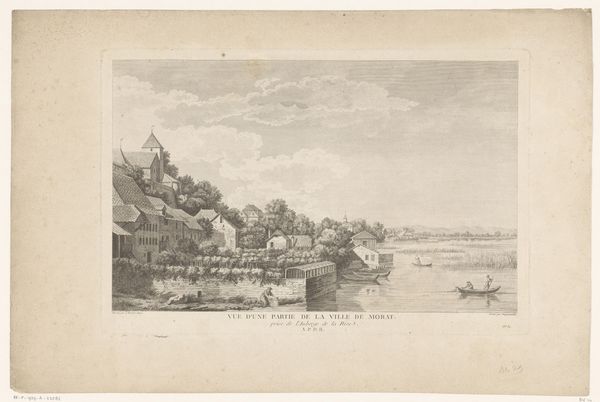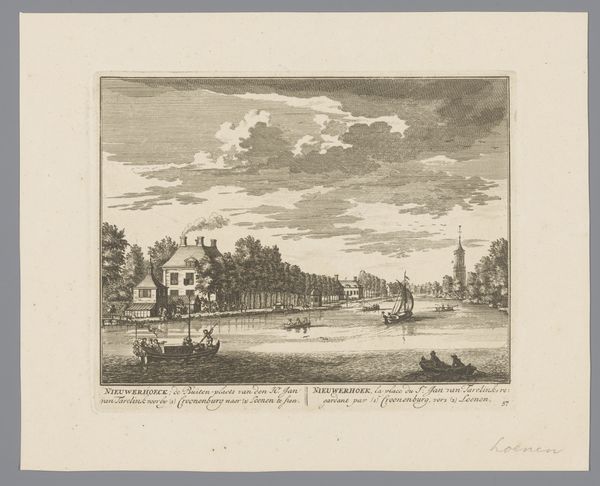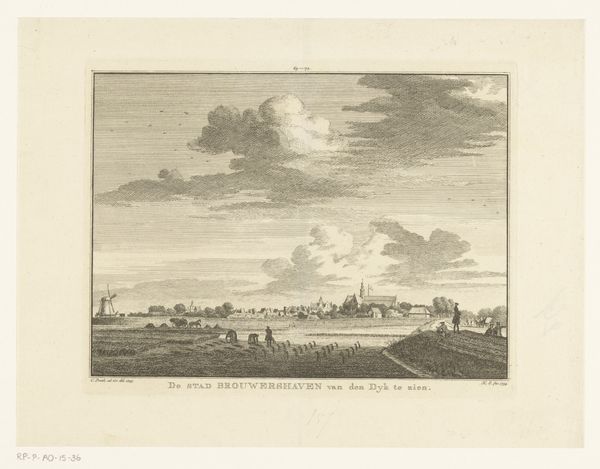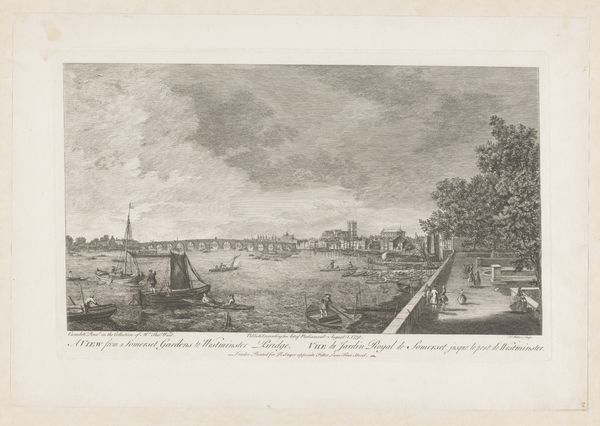
drawing, print, etching, paper, engraving
#
drawing
#
aged paper
#
light pencil work
#
medieval
#
parchment
# print
#
etching
#
light coloured
#
old engraving style
#
landscape
#
river
#
paper
#
cityscape
#
engraving
Dimensions: height 247 mm, width 372 mm
Copyright: Rijks Museum: Open Domain
Curator: Let's delve into Claude Niquet's "Gezicht op Attigny," created sometime between 1770 and 1831. It's a delicate engraving, portraying a distant view of a town. Editor: My initial reaction is a kind of melancholic calm. The muted tones and the etching technique give it a slightly detached, almost ghostly quality. It feels… historical, obviously, but also subtly charged. Curator: The historical aspect is key. Consider Attigny's significance during the Merovingian period—the site of important royal villas and synods. Niquet, through this piece, invites reflection on power, place, and continuity, especially through his cityscape perspective. We are asked to confront our relation to legacy and empire through this image. Editor: And I think it’s important to think about that image-making as labor too. Etching is labor-intensive. The fine lines meticulously etched into the plate, and the multiple states involved to proof and create a matrix. We're seeing Attigny mediated by process, and I imagine this process affecting the perception of the depicted urban site. Curator: Exactly! Moreover, consider the selection of Attigny, instead of another locale with greater current sociopolitical capital. How the location's forgotten importance, as a seat of long lost power, challenges notions of nation and borders. Editor: That makes me consider the availability of such images in a potentially burgeoning print market. Who were the consumers, and what stories were they looking to tell themselves about places like Attigny, their nation, and even their place within it? Was this perhaps meant to celebrate or bemoan the changing conditions, vis-à-vis material changes of the French kingdom and empire? Curator: It really makes you question the relationship between romantic nostalgia and the often exploitative realities that landscape aesthetics try to conceal. Editor: This examination pushes us beyond the pretty facade into considering the broader structures of production and distribution and their imbrication in historical narrative. Curator: Precisely! So it moves beyond just historical aesthetics into questioning power, identity and even gender at a particular socio-economic and geographic location in history. Editor: Ultimately, a simple-seeming cityscape becomes a mirror reflecting the complex layers of production and historical change. A fascinating testament to the intersection of place and labor!
Comments
No comments
Be the first to comment and join the conversation on the ultimate creative platform.
